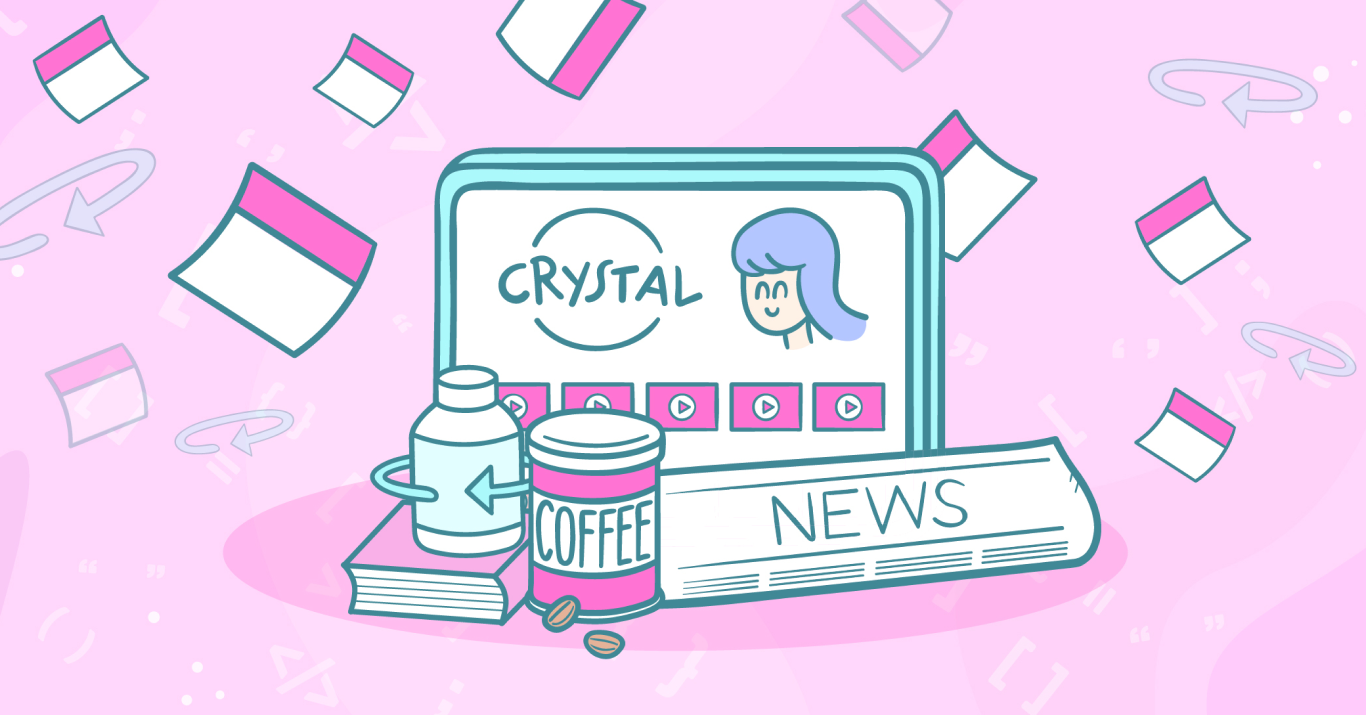How to Sell Subscriptions?
No, we won’t tell you how to run your business. We'll share best practices that we've found most of our clients follow when selling subscriptions.

Let’s get one thing straight: subscriptions aren’t just a trend—they’re the future. But don’t just take my word for it—the numbers speak louder than any sales pitch.
In 2023, the global subscription eCommerce market was valued at a whopping $120 billion and is projected to skyrocket to over $900 billion by 2026 (source). That’s not a typo. We’re talking about a 68% year-over-year growth rate.
Still, even with growing adoption, many businesses are unaware of the full spectrum of benefits that a subscription model can offer. We’ve already discussed this in our What's a Subscription Business Model and How Does It Work? blog post. So, here, let’s quickly explain why subscriptions are taking over the e-commerce world.
For businesses, it isn’t just about convenience—it’s a strategic play that drives customer loyalty and boosts lifetime value.
- Predictable Revenue: Subscription models ensure a steady cash flow, aiding in better financial management and planning.
- Customer Loyalty: Continuous customer engagement fosters loyalty, reducing churn rates and increasing lifetime value.
- Operational Efficiency: Streamlined processes and automated billing reduce administrative burdens and costs.
- Market Differentiation: Offering unique subscriptions can differentiate a business in a competitive market.
For customers, it is about cost saving and the appreciation they get from businesses, as they matter.
- Convenience: Regular, automated deliveries or services eliminate the need for repeated purchases.
- Cost Savings: Subscriptions often provide better value than one-time purchases, especially with bundled offers or long-term commitments.
- Personalization: Ongoing services can be tailored to individual preferences, enhancing customer satisfaction.
- Exclusive Access: Subscribers often enjoy exclusive content, products, or services, adding to the perceived value.
It is not all bells and whistles. There are some challenges as well. The subscription market is becoming increasingly saturated, with numerous players vying for the same customers. Retaining customers is a significant challenge, and high churn rates can undermine the benefits of the subscription model, leading to revenue instability.
Finally, growing businesses are concerned about scalability issues, such as maintaining service quality with a growing subscriber base or the technical challenges of scaling a subscription platform.
Setting Up Your Subscription Business
So, you’re ready to dive into the subscription game? Smart move. But you must lay a solid foundation before you start raking in that sweet, recurring revenue. Setting up a subscription business isn’t just about slapping a “Subscribe Now” button on your site—it’s about crafting a strategy that keeps customers hooked and coming back for more.
And it all starts with choosing the right subscription model. Not all subscriptions are created equal. Finding a model that fits your product, audience, and business goals is key. Don’t be afraid to mix and match! Hybrid models can offer the best of both worlds. Imagine a curated box with replenishment options or access to exclusive content with bonus products thrown in.
Next is pricing. Pricing isn’t just about covering costs—it’s about delivering perceived value and maximizing customer lifetime value. Getting that right matters more than you think.
Finally, you need tools to automate billing, track customer data, and streamline the entire process. Yes, you can use subscription commerce by Crystallize, as our flexible APIs make subscription management easy.
Crystallize Next.js Subscription Commerce Starter is an open-source e-commerce template built with Next.js and TypeScript. It's designed to help developers quickly implement subscription-based commerce models. The starter kit offers flexible pricing strategies, including flat fees and usage-based models. It suits startups and established enterprises looking to streamline their subscription offerings. Give it a try👇
Subscription Sales Strategies
If you already run your business with a subscription, this rather lengthy introduction above offers nothing new. However, it was necessary for all those considering implementing the model.
OK, much like you’d work on an eCommerce marketing strategy, you need one for your subscription business. So, let’s discuss the strategies that can help you sell subscriptions.
Remember that the main piece of the puzzle is and always will be the quality of your product/service. There are no workarounds for quality.
Understand Your Customers
This is an obvious one, but so easy to overlook. If you already have a business, leverage data analytics to understand customer preferences and behaviors. This can help you tailor your subscription offerings to meet specific needs and preferences.
Are you starting from scratch? Develop comprehensive buyer personas based on your product/service, industry, competitors, target demographics, interests, and audience pain points. These personas will guide your marketing and product development efforts.
Market Research and Competitive Analysis
While you build your personas, study your competitors' strengths and weaknesses. Identify what they’re doing well and where they’re falling short.
Use competitive analysis to identify market gaps your subscription business can fill. This will help you develop a unique value proposition.
Create / Re-think Your Value Proposition
What sets your subscription product/service apart? Emphasize features or benefits unique to your offering, your Unique Selling Points (USPs).
Craft messaging that resonates with your target audience. Ensure it clearly communicates the value and benefits of subscribing to your service.
Customer Acquisition and Retention Strategies
Exploit every channel your audience uses. By this, we mean content, SEO, and email marketing. We also mean a strong presence on social media platforms where your target audience spends time. Engage with followers to build relationships and promote your subscription service.
We mean referral, customer loyalty, and rewards programs to acquire new customers cost-effectively, incentivize long-term subscriptions, and reduce churn.
Effective Pricing Strategies
Offering multiple pricing tiers allows customers to choose a plan that fits their needs and budget. Consider offering a freemium version or a trial period to let potential customers experience your service before committing. Offering discounts for more extended subscription periods reduces churn and stabilizes revenue.
🪙Fully Flexible Pricing.
We're talking about promo codes, discount codes, coupon codes, or special prices. We are talking about having a platform that can support that. From site-wide seasonal sales to special member pricing, Flexible pricing in Crystallize has you covered 👇

Customer Experience
Alongside simplified sign-up processes and personalized offerings and recommendations, invest in high-quality customer service to resolve issues quickly and keep subscribers happy.
People and businesses often think that once someone purchases a product or service, they don't need to do anything else. The reality is quite the opposite. The battle starts there, and having an excellent customer experience is one of the best word-of-mouth tactics for growing your business.
Yes, I know all of this is basic stuff. What is funny is that it works.
Advanced Techniques for Boosting Subscription Sales
Say you’ve done all of the above; what other methods exist to attract and onboard potential customers?
Upselling and Cross-Selling
Enhance your subscription offering by suggesting additional products or services that complement what the customer is already subscribed to. For instance, if a customer subscribes to a meal kit service, you could offer them premium kitchen gadgets or exclusive recipe books.
You can also highlight the benefits of premium plans to your existing customers. Use targeted marketing to showcase the added value of upgrading, such as access to exclusive features, content, hidden menus, or additional services.
Upselling and cross-selling are two different but complementary sales strategies designed to boost revenue and enhance customer satisfaction.
Exclusive Offers and Limited-Time Deals
Use scarcity tactics to drive immediate action. Limited-time discounts, special bundles, or exclusive products can create a sense of urgency, encouraging customers to subscribe before the offer expires.
Alternatively, reward subscribers with access to exclusive content, products, or experiences. This not only adds value but also makes them feel special and appreciated.
Identify Where Customers churn
Monitor how often and how customers use your product or service. Declining usage can be an early indicator of potential churn. Track instances of failed payments and renewal rates and identify patterns. For example, a drop in renewals can indicate churn-prone segments.
Analyze different customer lifecycle stages, including onboarding, mid-usage, and renewal, to determine when and why churn occurs.
Finally, regularly survey customers to gauge their satisfaction and likelihood of recommending your service.
Discourage Downgrades
Built-in methods include continuously adding new features and services and discounts or additional perks for customers who commit to longer subscription periods. Still, downgrades happen, and excellent customer support helps immensely if they do.
Allow customers to temporarily pause their subscription or downgrade for a short period without losing their current benefits but provide clear information on what features or benefits they will lose. Or, if possible, suggest a pricing model based on usage, ensuring that customers feel they are getting fair value for what they pay.
Community Building and Engagement
Communities are a great way to maintain customer engagement and loyalty over time. Without it, users may feel disconnected and less committed to the service.
Create forums, Discord or Slack channels, social media groups, or community platforms where subscribers can interact, share experiences, and engage with your brand.
You can also organize online or offline events exclusively for your users. Webinars, Q&A sessions, or special workshops can enhance their experience and foster a sense of belonging.
Tracking Key Metrics
Without tracking key subscription metrics, businesses cannot make data-driven decisions to optimize their strategies. Although attribution can be challenging to pinpoint, tracking metrics helps you identify areas for improvement. But which metrics should you track?
Monitor Monthly Recurring Revenue (MRR): Track the monthly revenue generated from subscriptions to understand growth trends and financial health.
Track Churn Rates and Customer Lifetime Value (CLV): Monitor the number of customers leaving and the length of their stay. High churn rates indicate a need for improved retention strategies, while CLV helps assess customers' long-term value.
Use Data to Optimize and Iterate Strategies: Analyze the collected data to identify patterns, successes, and areas for improvement. Use these insights to refine and optimize your subscription strategies continually.
Whatever metric you track, do not read it in isolation from others. For example, a rise in traffic from organic search is excellent. Still, if you do not convert this traffic into subscribers, it could indicate poor keyword choice, a bad page UI, or a poor value proposition for the target audience, among other issues. You must investigate all of these to find a solution.
Recap of Key Points
Understanding your customers, conducting market research, creating compelling value propositions, and leveraging advanced techniques like upselling, exclusive offers, community building, and data-driven decision-making can help you effectively sell subscriptions and achieve sustainable growth.
By the way, Crystallize powers some of the world's largest subscription-based companies and understands that growth depends on how well we enable our customers to succeed.
Let us show you how our subscription engine can help your business grow. CLICK HERE and set up a personal 1-on-1 Crystallize demo. Let’s discuss your use case and take it from there.
Alternatively, why not SIGN UP for FREE, try Crystallize, and get our team's unparalleled support to help you get going.
Follow the Rabbit🐰

What's a Subscription Business Model and How Does It Work?
A regular, monthly influx of revenue from faithful customers? Who wouldn’t want to get in on that?! But how do you know if a subscription is the right approach for you?

Odds Ballklubb Launching a New Subscription Based Over the Top (OTT) Streaming Service Gullpila
Gullpila delivers engaging live and on-demand HD video content to Odds Ballklubb football club fans and represents a new direct revenue stream for the club.

Subscription eCommerce: The Ultimate Guide
Subscription ecommerce business models have seen fantastic growth in recent years. With Crystallize being at the forefront of it, now is the time to dive into the ins and outs of starting, running, and scaling an eCommerce subscription business.
